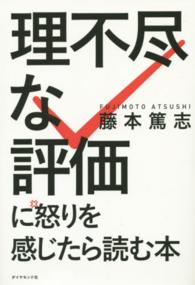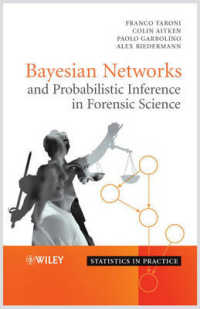Full Description
A Music Transcription Method: Notating Recorded Music by Ear teaches how to leverage music dictation in the modern music industry. The book's four parts cover aspects of preparation, process, interpretation, and industry resources related to notating recorded music by ear.
Taking a modular approach, the book guides readers from an initial subject overview to leveraging the craft for their own projects and careers. Each chapter includes an industry interview featuring diverse practitioner perspectives from Broadway, LA's film scoring scene, contemporary Jazz and Pop, orchestral and marching band styles, music educators, and music entrepreneurs. Transcribed sheet music examples, provided by members of GroundUP Music and several independent creators illustrate the transcription process, while field-relevant scholarly, educational, and professional references further illuminate the state of inquiry in music transcription. Learning outcomes, exploratory chapter activities, visual chapter maps, and further instructional visuals are included to support the learning styles of diverse readers.
Supported by online resources offering a growing repository of reference materials, including sample materials and instructional videos with a focus on technology literacy, this is essential reading for undergraduates on music transcription, arranging, and orchestration courses for a variety of musical contexts and genres, as well as for musicians perfecting their music notation skills.
Contents
Table of Contents
Preface
About the Author
Acknowledgments
Glossary
PART I: PREPARATION
Chapter 1: Field Introduction
Introductory Definition
Methodological Inquiry
Music Industry Applications
Chapter 2: Analytical Listening
Listening Approaches
Listening Dimensions
Auditory Analysis
Chapter 3: Transcription Setup
Playback
Listening & Referencing
Music Notation
PART II: PROCESS
Chapter 4: Outline
Setting the Scope
Sheet Music Formats
Global Music Information Layers
Chapter 5: Foundational Layers
Individual Layers
Music Note Series
Transcription Roadmap
Chapter 6: Dependent Layers
Note & Pattern Perspective
Phrase & Section Perspective
Transcription Roadmap
Chapter 7: Process Variants
Procedures in Context
Transcribing Multi-File Sources
Compact Target Formats
PART III: INTERPRETATION
Chapter 8: Music Notation
A Prescriptive Approach
Level of Notation Detail
Decision-Frame
Chapter 9: Macrostructure
Form
Time Signatures
Tempo
Chapter 10: Microstructure
Pattern Repetition
Harmonic Qualities
Nuance in Phrasing
Chapter 11: Orchestration
Individual Sound Sources
Stacked Composite Sounds
Dynamics & Timbre
PART IV: RESOURCES
Chapter 12: Opportunities
Common Career Profiles
Music Transcription Services
Self-Marketing
Chapter 13: Project Management
General Guidelines
Planning
Executing
Chapter 14: Workflow Concepts
Procedural Preparation
Systematic Approach
Digital Literacy
Index







